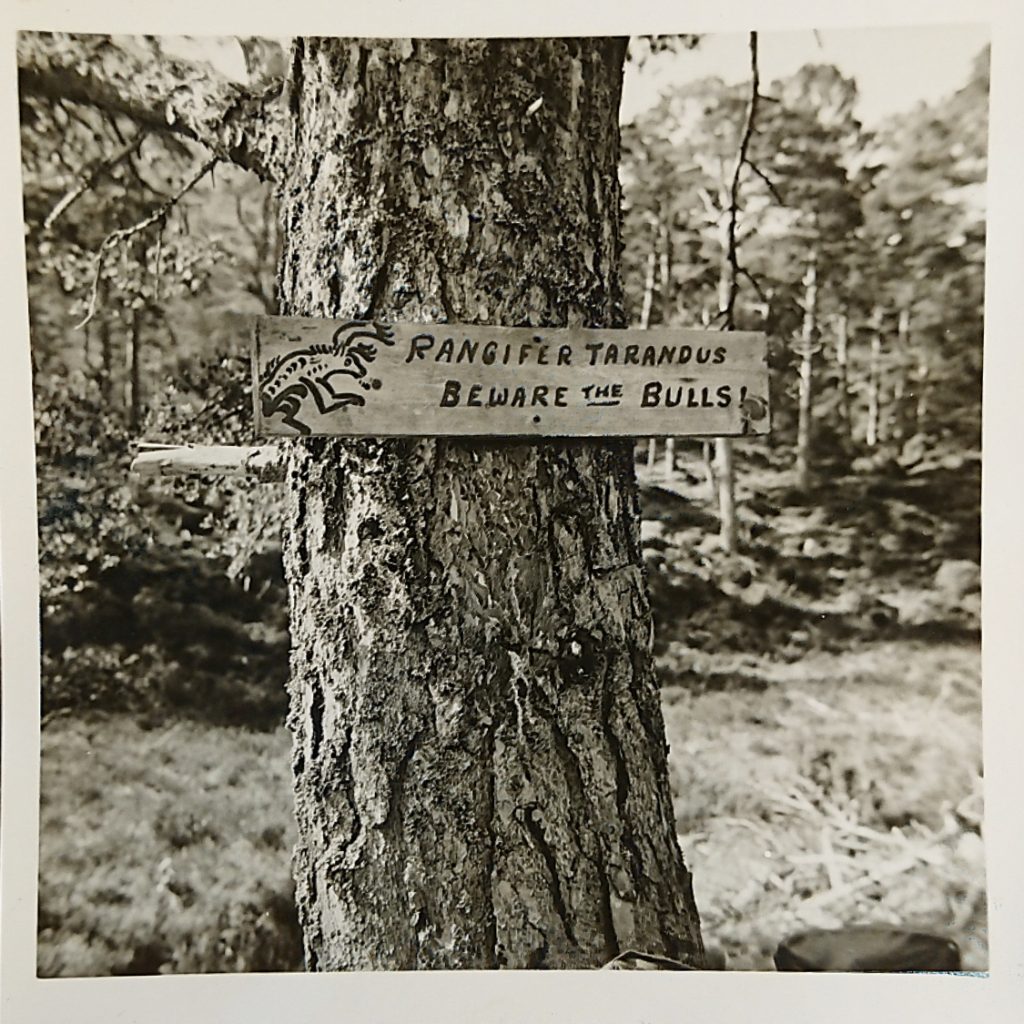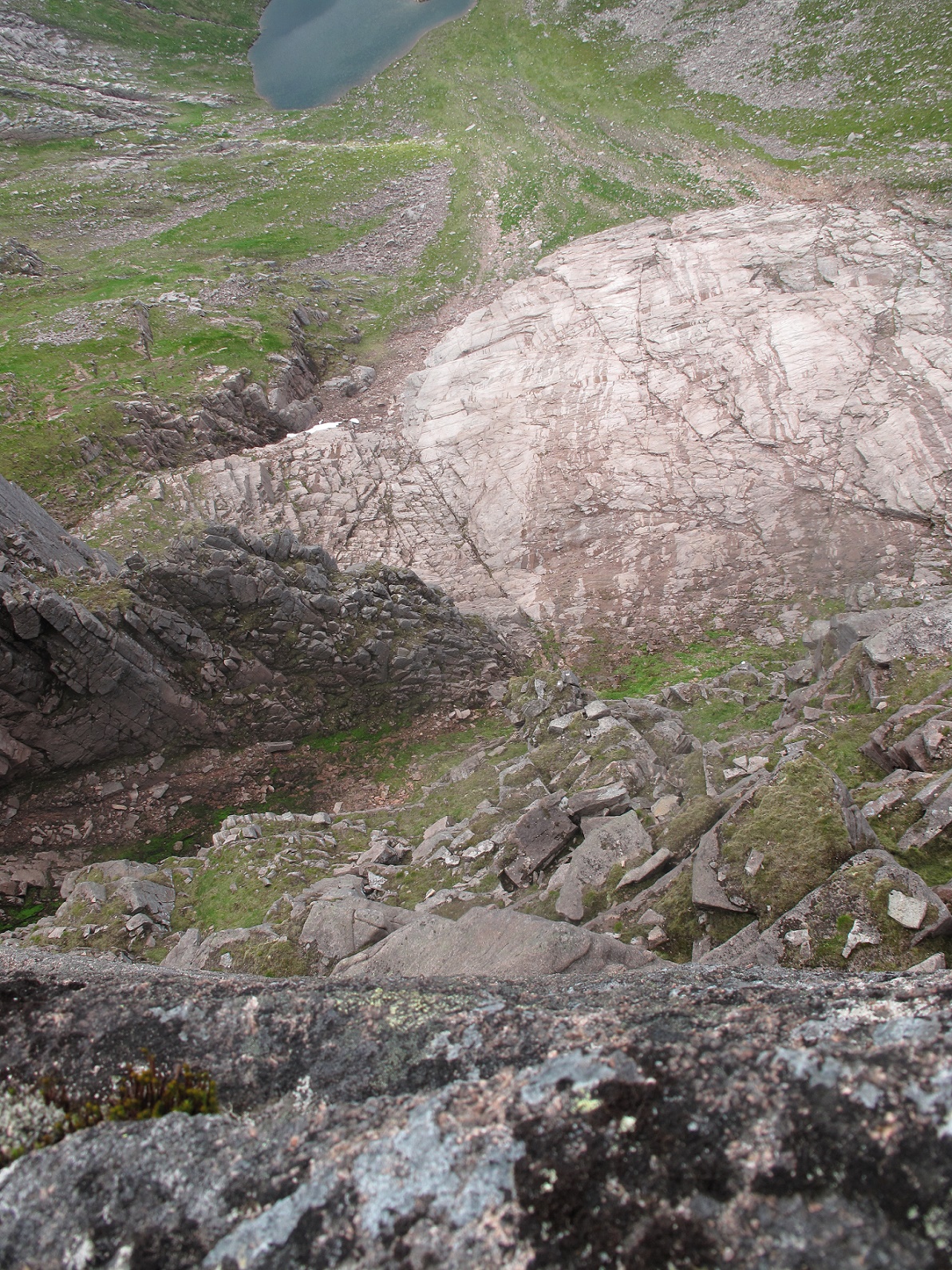At the time, it really does seem like it will last forever. When you head to work and it’s dark, then the sun sets again at 3.30pm and you’re heading home in the dark. But it must be my favorite season, you experience such varying weather conditions, and it gives you such an appreciation of what the reindeer endure out on the free range. So, I thought I would do a blog of my favorite wintery pictures and tell some tales from the free range.
One trip that will forever stay in my memory was a morning in April when Ruth and I went out on to the free range to move the herd for the 11am Hill Trip. There had been snow the night before and it was so windy! Once on the hill we weren’t entirely sure whether it was still snowing, or whether the wind was whipping the snow up off the ground and into our eyes. Either way, we both were wishing that we had brought along goggles to wear. We trudged along, having a rough idea of where the reindeer were and finally stumbled across them. The amount of snow and lack of visibility meant that the reindeer were very well camouflaged, so it took me basically tripping over them to finally notice them. I wish I had noted down the wind speed for that day but to give you some insight, the day before had a mountain gust of 91mph.

On another trip to collect the herd for the 11am Hill Trip later in April that included myself and Ben Hester, we came across a stark contrast in the weather from the Ski Center car park and in the Northern Corries, where the herd were that morning. At the Ski Center we were eluded into the false belief that we wouldn’t need much in the way of layers as it was a beautiful sunny morning but due to the nature of the hills, we decided to take something waterproof just in case. As we continued up into the Corries, the weather began to take a turn. The cloud came in, the wind kicked up and we were pelted with icy rain. It was a good thing that we were only collecting the herd and moving them down to a lower spot as the weather would have made an uncomfortable Hill Trip!
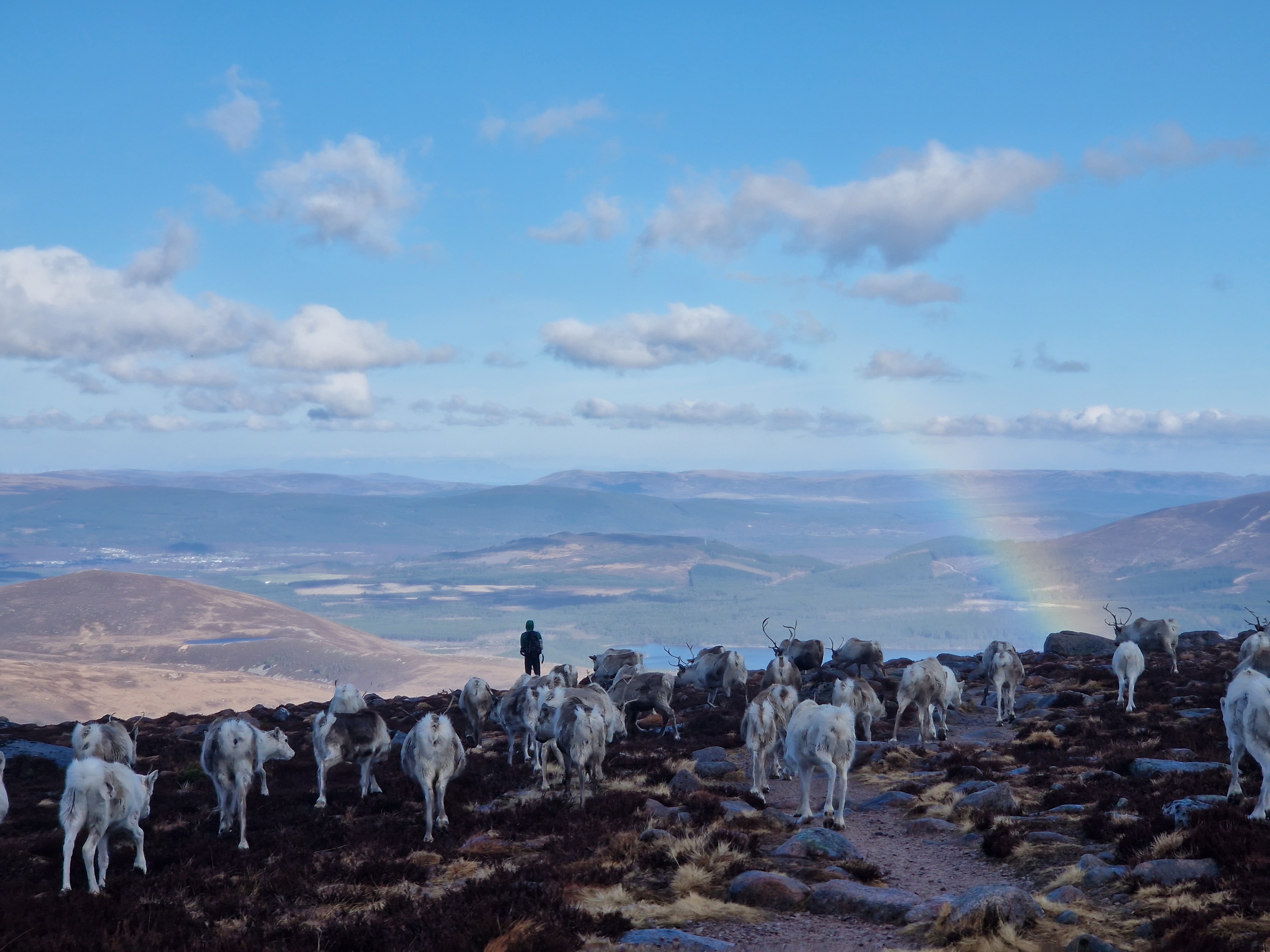
But for every couple of bad weather days, we get exceptionally beautiful days to make up for the lack of daylight hours and hard going weather…

Other days we get great shows of the clouds through the mountains, I always love to see how clouds hug the landscape…
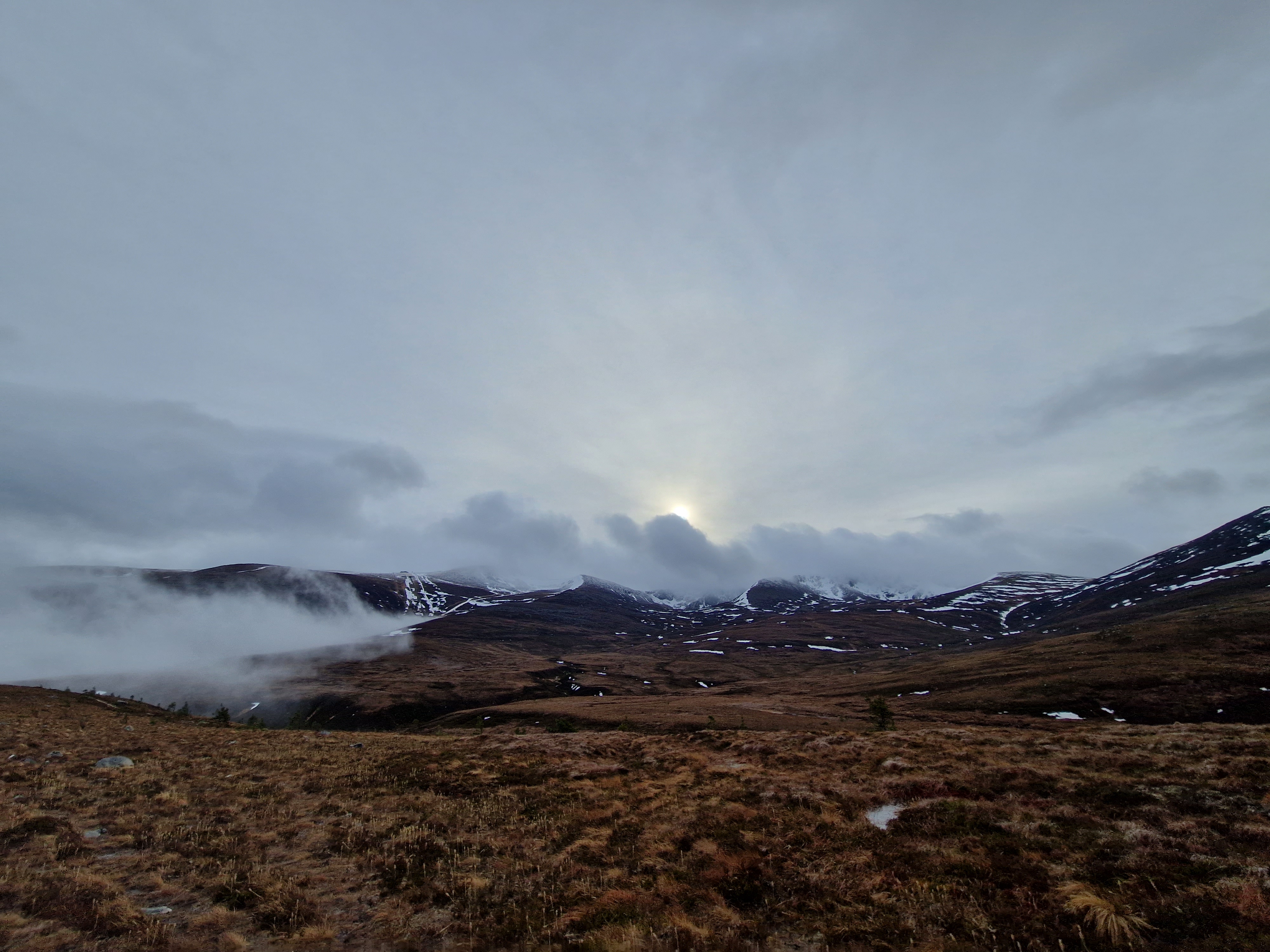
And to be honest, it’s not all doom and gloom when the sun sets early as we get to experience beautiful sunsets…


Sometimes you can head out in cloudy conditions and by the time you have found the herd the cloud has lifted, and you have the most fantastic view…
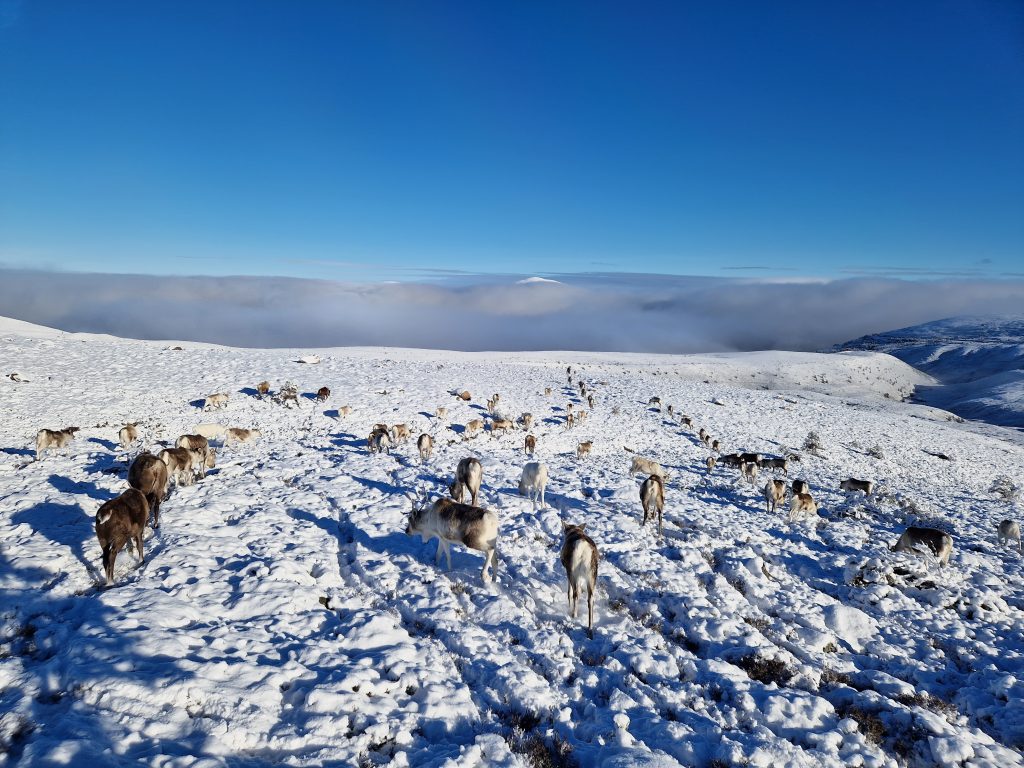

Overall, I love the winter seasons, you get to experience so many extremes when it comes to weather and even though most plants have died back, you still get such a variety of colour within the environment. More importantly, we (as herders) talk frequently about the adaptations that reindeer have to help them survive in a sub-artic environment, so it is thrilling to actually experience the elements like they do!


Amy




























